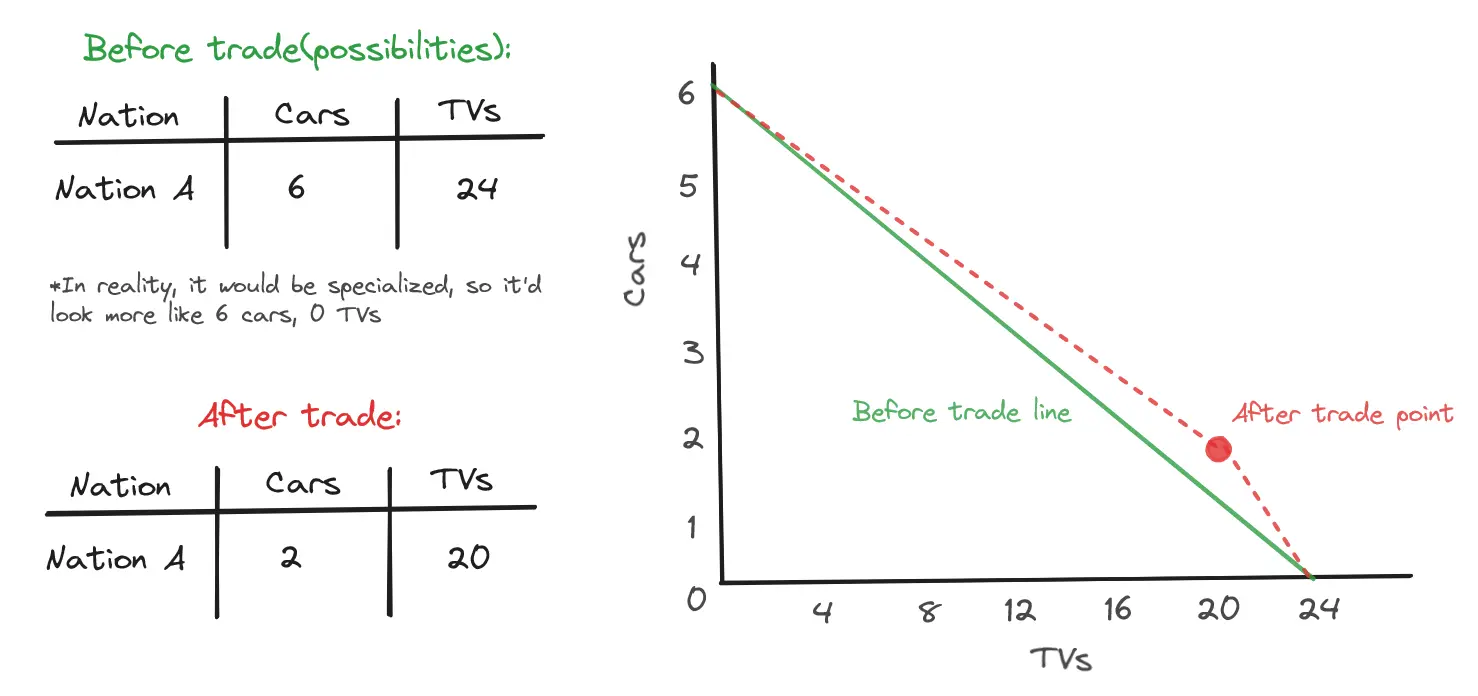Trade is only mutually beneficial when you are able to specialize better than your competitors.
Absolute Advantage
A producer can supply a certain quantity more efficiently than other producers
Calculating Absolute Advantage
You will have to determine who can create more.
| Nation | Car | TV |
|---|---|---|
| A | 2 | 8 |
| B | 3 | 21 |
| In this instance, nation B has the absolute advantage in Cars and TV manufacturing. |
Comparative Advantage
A producer can supply a certain item with a lower Opportunity Cost than other producers
Calculating Comparative Advantage
| Nation | Car | TV |
|---|---|---|
| A | 2 | 8 |
| B | 3 | 21 |
| Find opportunity cost of each country manufacturing each thing | ||
| $OC_{A | Car} = \frac{#TV_{A}}{#Car_{A}}=\frac{8}{2}=4$ | |
| $OC_{A | TV} = \frac{#Car_{A}}{#TV_{A}}=\frac{2}{8}=\frac{1}{4}$ | |
| $OC_{B | Car} = \frac{#TV_{B}}{#Car_{B}}=\frac{21}{3}=7$ | |
| $OC_{B | TV} = \frac{#Car_{B}}{#TV_{B}}=\frac{3}{21}=\frac{1}{7}$ | |
| We find the country with the lowest opportunity cost in a specialization to determine what their comparative advantage is. | ||
| In this case: |
- Nation A has the comparative advantage in making Car,
- Nation B has the comparative advantage in making TV
Calculating Range of Terms of Trade
For a specific product, the range of terms of trade is between the opportunity costs that each country has towards that product. In the above example, the terms of trade range for TV would be
Specialization
A country should specialize in the product that they have the comparative advantage in. In the above example, if we specialize, the market would look like:
| Nation | Car | TV |
|---|---|---|
| A | 2 | 0 |
| B | 0 | 21 |
| If, say, the government gave 3 endowments, then we would just multiply all produced values by 3 |
| Nation | Car | TV |
|---|---|---|
| A | 6 | 0 |
| B | 0 | 63 |
Trade Triangle
A trade triangle is made by drawing a before trade specialization possibilities line and an after trade point.
 If the after trade point is above the line, then the trade was beneficial
If the trade point was below the line, then trade was detrimental
If the after trade point is above the line, then the trade was beneficial
If the trade point was below the line, then trade was detrimental